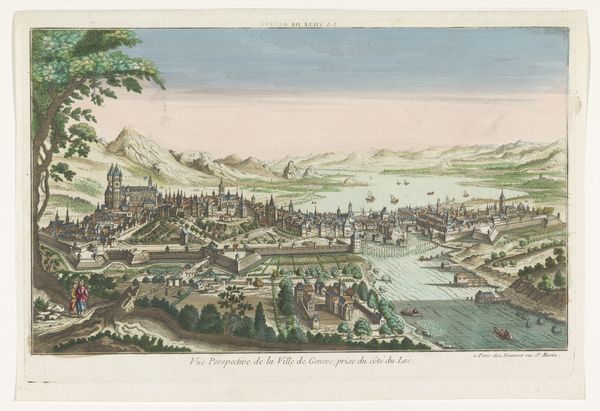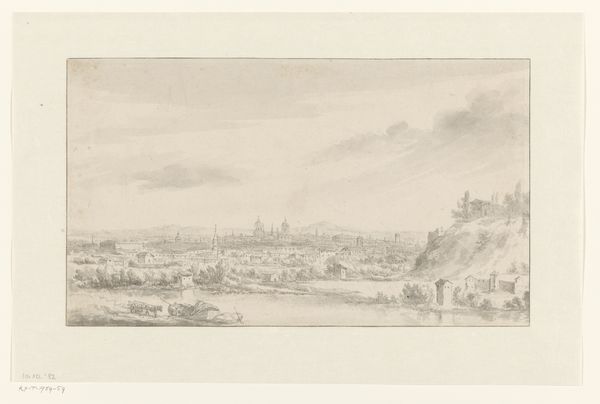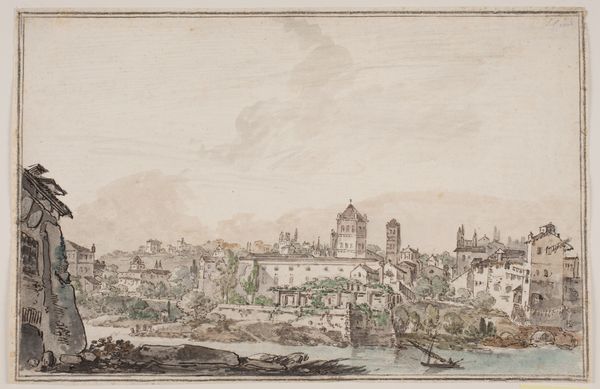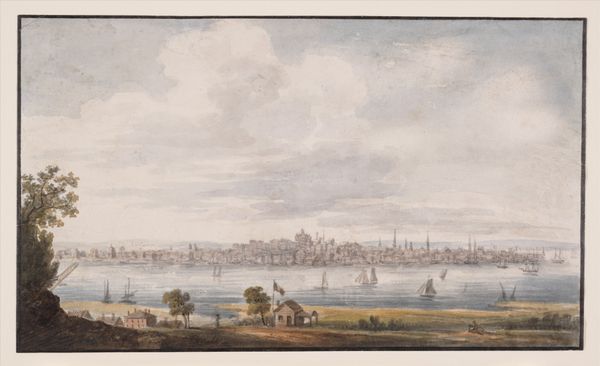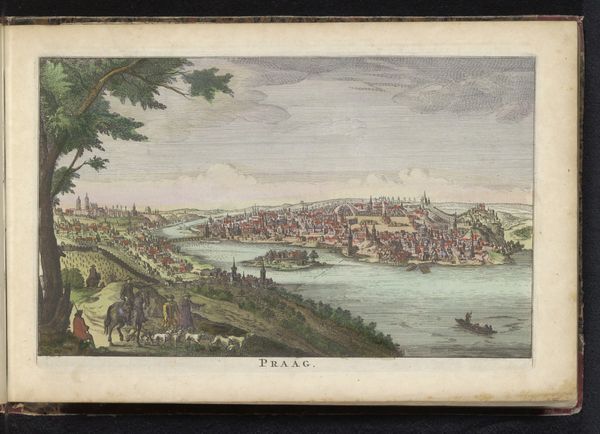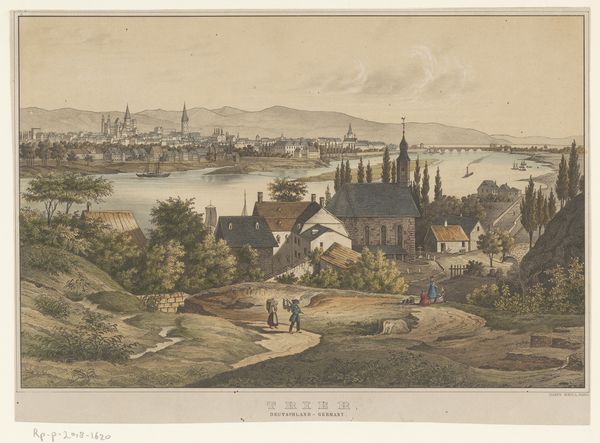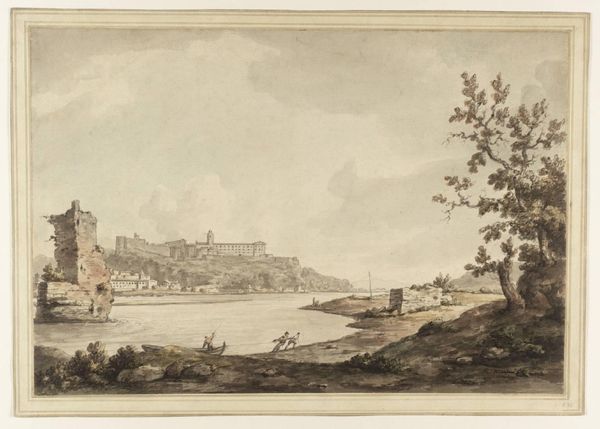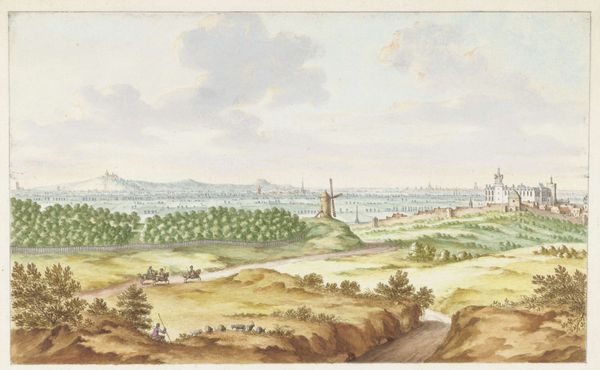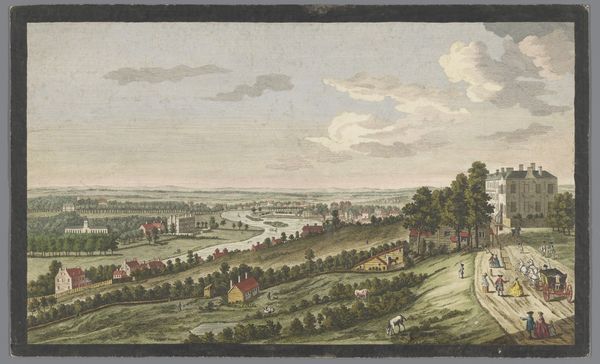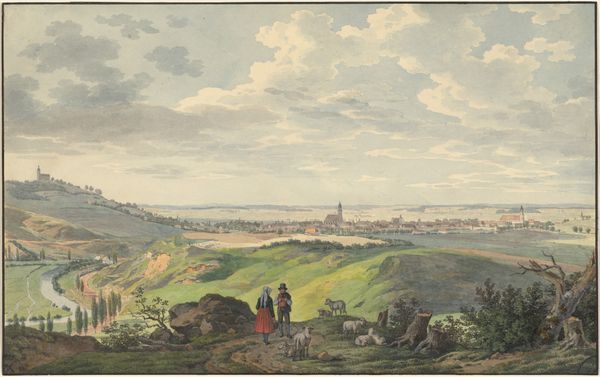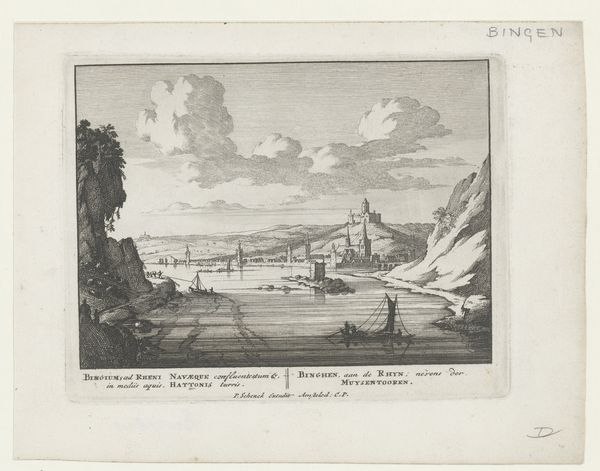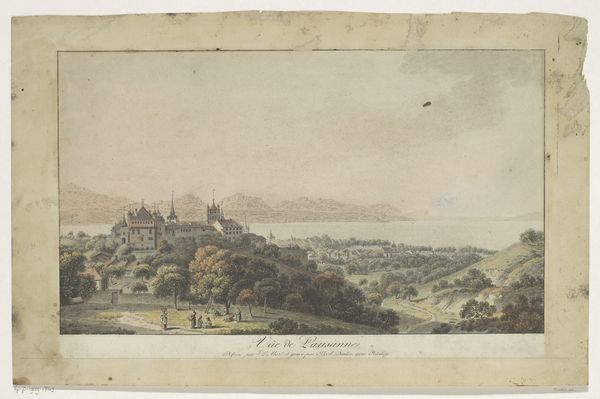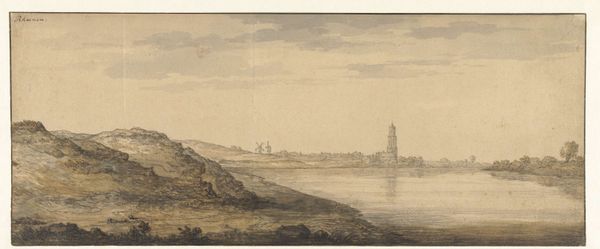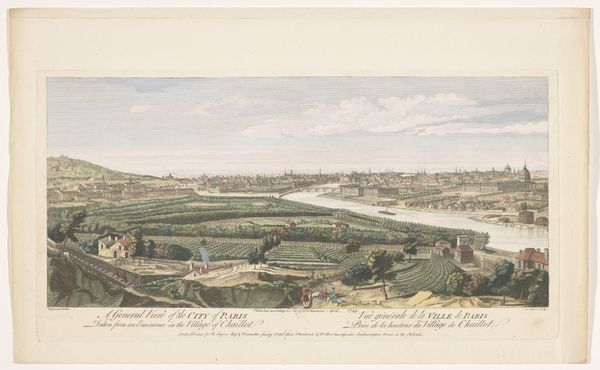
drawing, coloured-pencil, plein-air, watercolor, ink
#
drawing
#
coloured-pencil
#
plein-air
#
landscape
#
watercolor
#
ink
#
coloured pencil
#
romanticism
#
cityscape
Copyright: Public Domain
Editor: This is "View of Mainz after the Siege of 1793," created in that same year by Georg Melchior Kraus. It’s a watercolor, ink, and colored pencil drawing showing a cityscape. I’m struck by the detailed depiction of what looks like fortifications around the city. What's your perspective on this work? Curator: This piece fascinates me when we consider the materials used and their social context. Kraus didn't opt for oils, the medium of high art. Instead, he employs the readily available, almost documentary, mediums of watercolor, ink and colored pencil. How does this choice of "common" materials reflect on Kraus's status and the purpose of his artwork? Is it to elevate the siege to high art, or to simply document it? Editor: That's interesting. So the materials themselves position the artwork within a particular social and perhaps economic sphere? I hadn't thought of it that way. Curator: Precisely! Consider, too, the labor involved. This is *plein air* work. Imagine the effort and time in creating this landscape on site, carrying materials and completing the drawing in what was most likely a landscape marked by destruction. The level of detail in the fortifications suggests painstaking work; this piece isn't just observation; it is also an inventory, of sorts. What do you think the intention behind this detailed portrayal was? Editor: Perhaps to show the extent of the damage, almost as a record for future rebuilding efforts? The materials make the artwork seem like a document, more aligned with craft than fine art, and that impacts its perceived value and perhaps its purpose too? Curator: Exactly! It blurs that line. And understanding those considerations opens us to richer understanding of art historical narratives that transcend just aesthetics. Editor: I’ve never considered landscape art in that way, with the materials pointing toward societal observations. It makes me rethink how art can reflect—and even be shaped by—labor and resource availability.
Comments
No comments
Be the first to comment and join the conversation on the ultimate creative platform.
